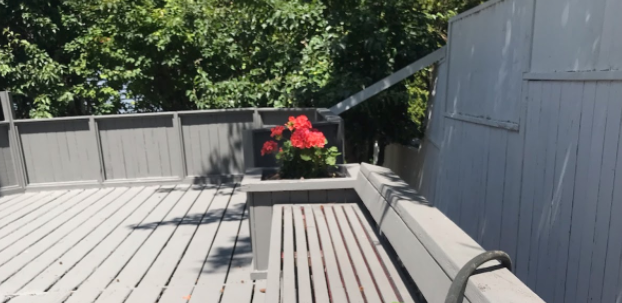Deck Painting and Refinishing

Deck Painting and Refinishing
After you've decided on the right product for your decks, such as a high-quality stain or a long-lasting exterior paint, you'll need to set aside time for surface preparation. This is one of the most common mistakes that do-it-yourself homeowners make while painting any surface in their home. Make necessary repairs and ensure that the entire deck is clean and dry. Some property owners use Power washers to remove all grime, grease, and dirt.
Allow ample drying time before applying the first layer. Before you open the paint, ensure you've fixed loose boards, driven-in nails, and so on. If you don't want to power wash the deck, use a brush with a robust and thick bristle and a solution of three parts water and one part bleach. Remove mildew and stains and allow to dry completely.
When you're sure the wooden surface is suitable for staining or painting, schedule the task when the deck is not in direct sunlight or the temperature is not too high. Because most paint products perform best between 60° F and mid-80° F, spring is often the ideal season. Of course, outdoor painting or staining can also yield nice effects in the fall. The idea is to undertake the task when the weather is mild.
Too cold, too hot
For example, latex paints should be applied at temperatures between 50° to 85° F, as both seasoned painters and paint manufacturers recommend. Heat can cause paint to dry too rapidly, leading to brush markings and "clumping" if you try to paint when the temperature is above 70 degrees Fahrenheit. Paint will not flow evenly or stick securely to a cold surface. Painting when it's too chilly causes the paint to peel and crack quickly after completion.
Many people over-stain or over-paint a wood surface because they mistakenly believe that "more is better." Stains and paints that protect well enough to be used outside are penetrating by their very nature. Carefully follow the product recommendations.
Paint and stain don't get along well with moisture. Remember to plan for ample drying time for the wood. Two common errors should be avoided painting in hot weather and direct sunshine and not waiting for new pressure-treated wood to "cure" before painting or staining. Before you start painting, make sure you consult an expert.
Benefits of Deck painting & staining
Your deck painting should always be completed. Because unfinished wood deteriorates rapidly when exposed to the weather, finishing is essential. Wood reacts negatively to dampness by twisting, warping, and cracking. The sun's rays and the moisture they bring can make fungi and wood rot grow faster.
When deciding how to complete your deck, you have two aesthetic options: paint or stain. Painting is the most effective method of wood preservation. It provides the longest-lasting protection against moisture and sunshine for wood, up to ten years in some circumstances.
Showcasing the wood's natural grain with a stain gives a sophisticated vibe. The wood's pores are sealed off from moisture absorption by the stain. While paint offers far better protection from moisture, the stain still does a decent job. It also only offers a minor defense against the sun, so you'll have to reapply the stain more often than you would paint. Decks need to be restained every three to four years on average.
Our experienced painters are pros at painting decks and outdoor surfaces. They'll be there to walk you through the process every step of the way. First, we'll help you decide the finish and color of the stain or paint. Then we'll prep the surface of your deck by cleaning off all debris and making sure all the boards are still in good shape—you don't want to paint or stain any wood that might be damaged or rotting.
Get a Free Quote Today!
Contact Us
We will get back to you as soon as possible
Please try again later

All Rights Reserved | Brian Hoge Painting LLC
